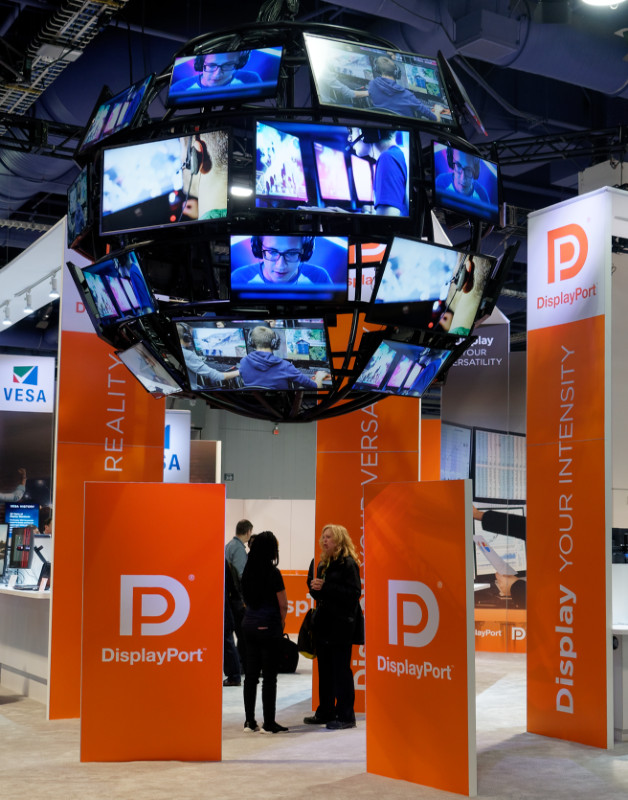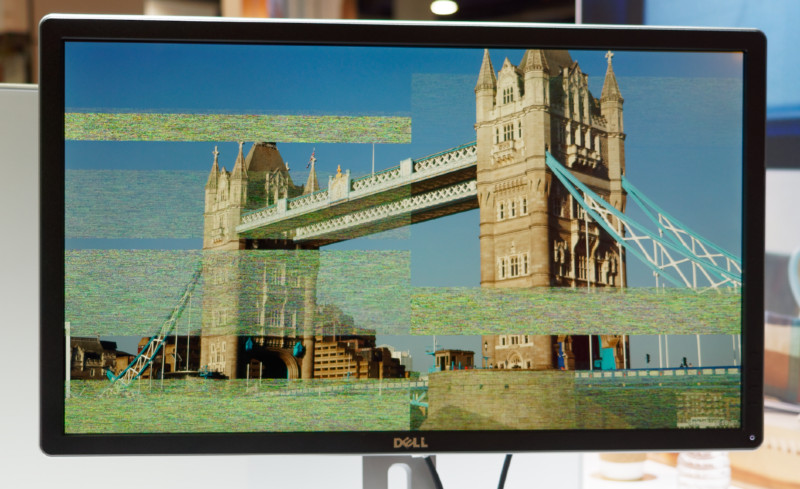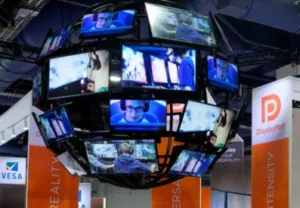Vesa was in the South Hall although it listed itself as DisplayPort. The company was in a very positive mood as DisplayPort, especially in its Alt-mode, continues to gather momentum. At the show, there was a good display of a range of DisplayPort solutions from the original Dell 27″ QuadHD monitor, which was launched in 2008 with DisplayPort 1.1. By 2013, there were UltraHD/4K displays from Samsung using single cables that used HBR2. 5K displays also appeared, based on dual cables, but are now available with a single cable.

In 2017, 8K 30p with a single cable was possible and now we are at 8K 60p with single cables. Vesa continues to promote development of the standard and the next version, which is 18 months or so away, will ‘at least’ double the bandwidth based on faster bitrates and better compression.
The USB Type-C Alt-mode has been a big win and the latest Snapdragon 845 natively supports this function and so does the equivalent Exynos chip. The Nintendo Switch has a Type-C dock. Although the Switch dock has an external HDMI to make it simple to connect to TVs, the connection is based on DisplayPort, with a conversion to HDMI after the interface. We have previously reported that this could be a lower cost solution than using the HDMI Alt mode and this seems to provide some evidence of this.
An initiative from VESA has been the HDR 400/600/1000 label programme, which is starting to get traction. On the booth, there was an HDR400 monitor (the Asus PA27AC) and it looked surprisingly good, and significantly better than a ‘standard’ gaming monitor. That’s good news as it will allow a range of solutions for gamers at different price levels, but that will deliver an enhanced experience. We asked about the use of HDR TVs with PCs for gaming and we heard that a problem with this is that the TVs do not properly populate the EDID data to signal that they are HDR compatible.
On display was also a Philips HDR1000 large (43″) UltraHD monitors with wide colour gamut, the 436M6. At the time we went by, the display looked good, but not fantastic and we suspect that there might have been some set-up issues as our visit was on the first morning.
 Hardent had a demo of the problems with DSC if FEC is not implemented. Image:Meko
Hardent had a demo of the problems with DSC if FEC is not implemented. Image:Meko
One of the major improvements in DisplayPort 1.4 was the inclusion of Forward Error Correction (FEC). (DisplayPort 1.4 Supports Error Correction For DSC) This was important because the compression in Displaystream Compression (DSC) is much more susceptible to problems from noisy signals or transmission errors than uncompressed data. Hardent, which has chips and ip to support DSC, was showing the effect of noise if there was no FEC and which has not been shown before.
A project at Vesa is to develop a version of DisplayPort that is suitable for VR and AR applications. This kind of application is more bi-directional than traditional display interfaces, because of the range of sensors that are likely to be in a headset. The project started as a SIG but is now a Task Group, so is heading towards a specification.

